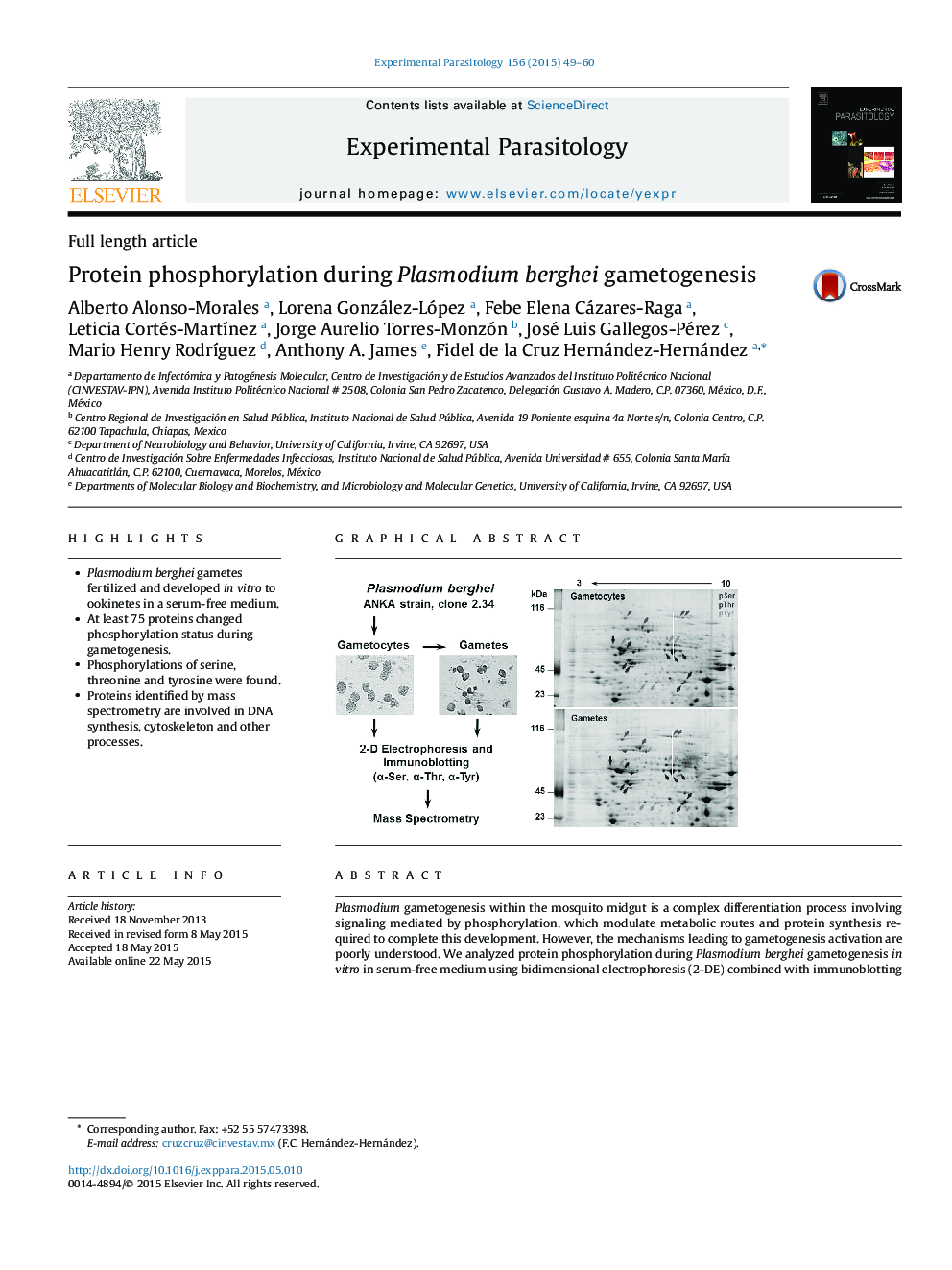| Article ID | Journal | Published Year | Pages | File Type |
|---|---|---|---|---|
| 6290658 | Experimental Parasitology | 2015 | 12 Pages |
â¢Plasmodium berghei gametes fertilized and developed in vitro to ookinetes in a serum-free medium.â¢At least 75 proteins changed phosphorylation status during gametogenesis.â¢Phosphorylations of serine, threonine and tyrosine were found.â¢Proteins identified by mass spectrometry are involved in DNA synthesis, cytoskeleton and other processes.
Plasmodium gametogenesis within the mosquito midgut is a complex differentiation process involving signaling mediated by phosphorylation, which modulate metabolic routes and protein synthesis required to complete this development. However, the mechanisms leading to gametogenesis activation are poorly understood. We analyzed protein phosphorylation during Plasmodium berghei gametogenesis in vitro in serum-free medium using bidimensional electrophoresis (2-DE) combined with immunoblotting (IB) and antibodies specific to phosphorylated serine, threonine and tyrosine. Approximately 75 protein exhibited phosphorylation changes, of which 23 were identified by mass spectrometry. These included components of the cytoskeleton, heat shock proteins, and proteins involved in DNA synthesis and signaling pathways among others. Novel phosphorylation events support a role for these proteins during gametogenesis. The phosphorylation sites of six of the identified proteins, HSP70, WD40 repeat protein msi1, enolase, actin-1 and two isoforms of large subunit of ribonucleoside reductase were investigated using TiO2 phosphopeptides enrichment and tandem mass spectrometry. In addition, transient exposure to hydroxyurea, an inhibitor of ribonucleoside reductase, impaired male gametocytes exflagellation in a dose-dependent manner, and provides a resource for functional studies.
Graphical AbstractDownload full-size image
